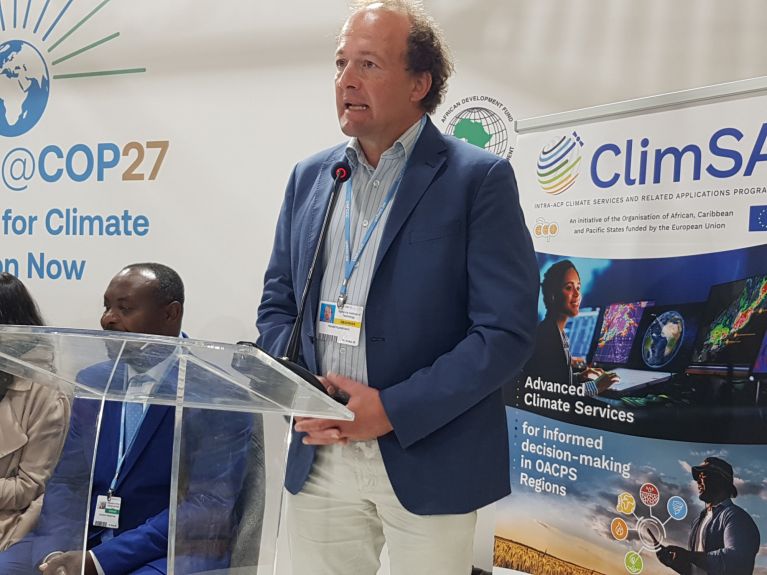“We have to adapt in order to become resilient”
Extreme weather is become increasingly frequent and destructive. The hydrologist Harald Kunstmann is studying how we can adapt to the impacts of climate change.

Professor Kunstmann, why do we need to address questions of climate resilience?
We have to adapt in order to become resilient to the impacts of climate change and thereby to minimise the damage. I’m talking here about damage in economic and health terms, but also about the consequences for the environment. These aspects are interrelated in highly complex ways. We not only address questions that relate directly to the environment, but also explore how the economy will need to be adapted and look at the legal framework we will require to achieve climate resilience. However, this doesn’t make it any less important to reduce our greenhouse gas emissions, which are the cause of anthropogenic climate change.
How can regions become more resilient to extreme weather in the future?
As a hydrologist, my particular area of expertise is water. We need to establish good flood protection on the one hand, and on the other to better prepare for drought and heatwaves. In this context, the buzzwords are sponge cities and sponge landscapes: the idea here is for the water to be better absorbed by the soil rather than simply draining it off. This helps create new groundwater, which we urgently need during periods of drought or heatwaves. Obviously the effect will be small if all we have is a single car park where the water is able to penetrate the soil. What we need is to design large sponge landscapes to significantly increase the volume of groundwater. However, drainage systems have been installed on a lot of agricultural land to quickly rid fields of water because too much water can reduce crop yields.

What are the obstacles on the path to climate resilience?
It is extremely difficult, if not impossible, to completely redesign existing structures such as cities. It is easier to take climate adaptation aspects directly into account when planning new towns or urban districts, for example by providing unsealed areas, green roofs, areas of shade and water retention basins. There are also political hurdles due to a lack of legislation or because existing laws make it complicated to implement climate adaptation measures. But I have the impression that the EU is heading in a good direction overall with its climate protection regulations and that this will also benefit us in Germany.
_________________________________
Professor Harald Kunstmann has been the director of the Centre for Climate Resilience at the University of Augsburg since 2021.


